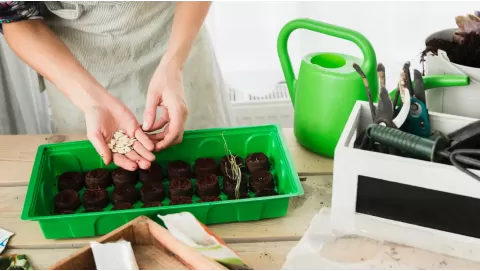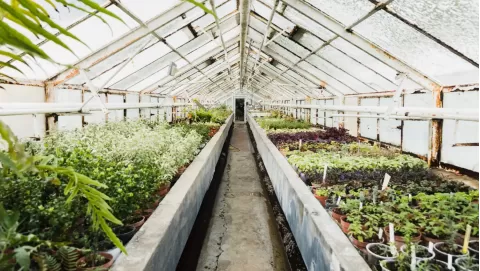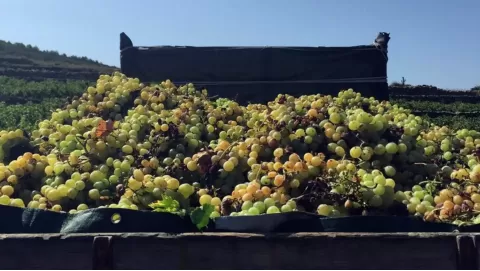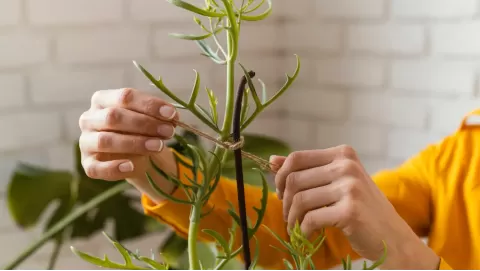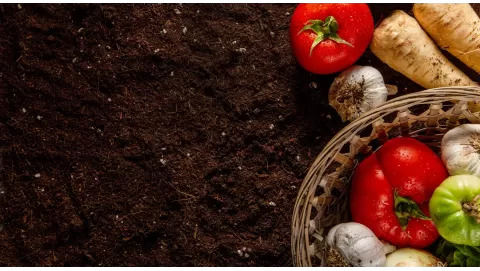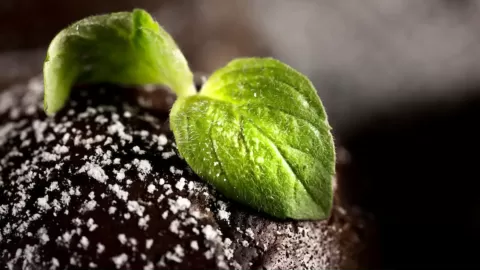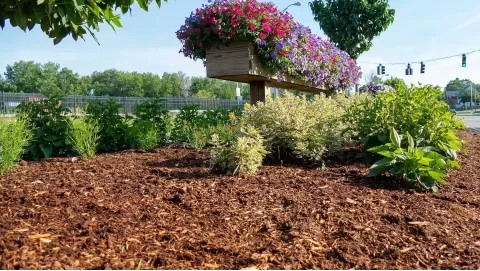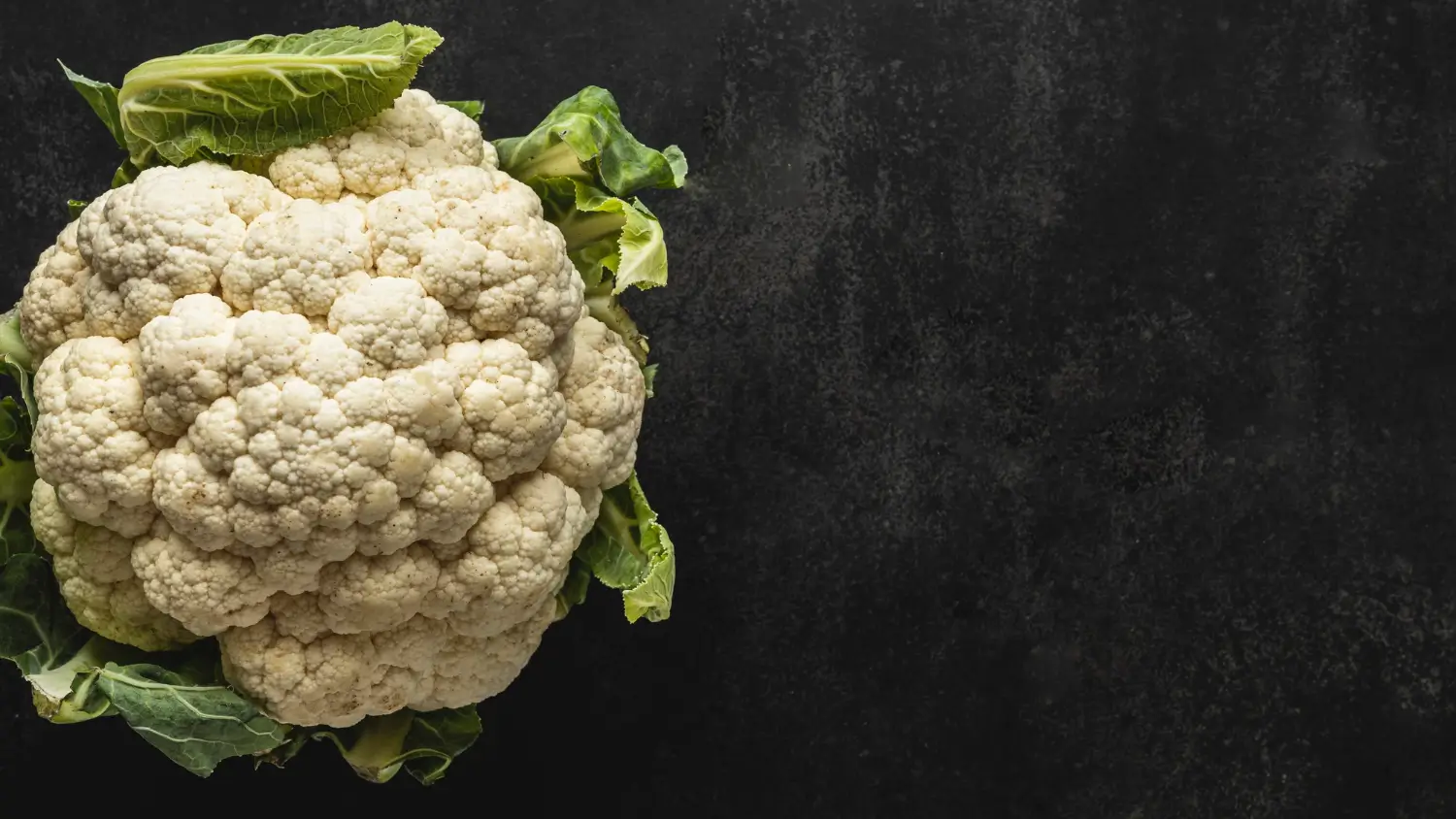
How to grow cauliflower: A step-by-step guide for home gardeners
Many home gardeners face challenges growing vegetables. Plants like tomatoes and peppers need warm temperatures and regular care. Similarly, carrots and radishes require specific soil conditions to grow well. Pests, plant diseases, and changing weather can also make gardening challenging. So, choosing the right vegetables can make home gardening easier and more enjoyable.
Cauliflower is a healthy and versatile vegetable that grows well with proper care. It is high in vitamins C and K, fiber, and antioxidants, making it a great choice for a nutritious diet. Cauliflower can be cooked in different ways, such as roasting, steaming, or mashing, and is popular in many recipes.
Growcycle offers various products to help gardeners cultivate vegetables like cauliflower. It also provides a range of gardening supplies that can support cauliflower growth. These include LED grow lights, soil nutrients, and plant propagation tools, which are essential for starting seeds indoors and ensuring healthy plant development.
Botanical Description
Cauliflower is a cool-season, annual vegetable that grows in a compact, upright form with large leaves surrounding the edible head. It is a natural biennial plant that is usually grown annually in gardens and farms.
1. Stem and Leaves
- The stem is short, thick, and sturdy, supporting the large leaves and curd (head).
- The broad, lobed leaves are bluish-green in color. They form a rosette around the head and may curl slightly inward to protect it.
2. Root System
- Cauliflower has a shallow fibrous root system, spreading close to the soil surface.
- The roots are sensitive to disturbances, so transplantation should be done carefully.
3. Edible Part (Curd or Head)
- The curd is the edible portion of cauliflower, formed by undeveloped flower buds.
- It is usually white but can also be purple, green, or orange, depending on the variety.
- The curd develops as a dense, rounded cluster protected by surrounding leaves.
4. Flowers and Reproduction
- If not harvested, the cauliflower plant produces yellow, four-petaled flowers in its second year.
- These flowers grow on tall stalks and are pollinated by insects.
- The plant reproduces through seeds formed in elongated pods similar to those of other brassicas.
5. Growth Cycle
- Germination: 5-10 days
- Vegetative Growth: 4-6 weeks
- Head Formation: 3-5 weeks
- Harvest: Around 60-100 days after planting, depending on the variety.
Cauliflower Varieties
Cauliflower comes in several varieties, differing in color, growth time, and climate adaptability. Choosing the right variety depends on the season, growing conditions, and personal preference. Here are the main types of cauliflower:
1. White Cauliflower
This is the most common variety found in grocery stores. It has a compact, white curd surrounded by green leaves. Some popular types include:
- Snowball: A fast-growing variety with smooth, firm heads.
- Snow Crown: Early-maturing, heat-tolerant, and ideal for home gardens.
- Amazing: Resistant to pests and diseases, with large, dense heads.
2. Purple Cauliflower
Purple varieties contain anthocyanins, antioxidants that give them their vibrant color. These types have a slightly nuttier and sweeter taste than white cauliflower. Popular varieties include:
- Graffiti – A deep purple variety that retains its color when cooked.
- Purple Head – A hardy type that thrives in cool weather.
3. Green Cauliflower (Broccoflower)
A hybrid between broccoli and cauliflower, green cauliflower has a milder, sweeter flavor. Examples include:
- Alverda – Light green heads with a tender texture.
- Vorda – A vibrant green variety with excellent heat resistance.
4. Orange Cauliflower
Also called cheddar cauliflower, this variety is rich in beta-carotene, which gives it a bright orange color. It has a slightly sweeter flavor and is packed with nutrients. Notable types include:
- Cheddar – High in vitamin A and has a mild, buttery taste.
- Flame Star – Heat-tolerant and produces medium-sized orange curds.
5. Romanesco Cauliflower
This unique variety has a spiral, fractal pattern and a crisp texture with a nutty flavor. It is often used in gourmet cooking.
Choose the Right Cauliflower Variety based on the Season
Cauliflower is a cool-season crop that thrives in moderate temperatures and does not tolerate extreme heat or cold. The choice of variety depends on climate, season, and growing conditions.
1. Spring and Early Summer Varieties
- Suitable for regions with mild winters and moderate springs.
- Early-maturing varieties (50-70 days) grow best in cool but stable temperatures.
- Examples: Snow Crown, Early White, Graffiti (Purple Cauliflower).
2. Fall and Winter Varieties
- It is ideal for temperate and warm regions where winters are mild.
- These varieties take 80-100 days to mature and tolerate light frosts.
- Examples: Amazing, Cheddar (Orange), Romanesco.
3. Heat-Tolerant Varieties
- Suitable for warmer climates or late spring planting.
- These types resist heat stress and bolting (premature flowering).
- Examples: Flame Star, Vorda (Green Cauliflower).
Preparation for Planting Cauliflower
Growing cauliflower successfully begins with proper preparation of both the soil and the planting method. This ensures that the plants have the best chance to develop into healthy, productive crops.
Choose the Right Planting Method
There are two main methods to plant cauliflower, such as:
- Direct Sowing: This method involves sowing seeds directly into the garden soil. It is best for regions with a mild climate and longer growing seasons. Direct sowing is ideal if the soil temperature is consistently 60-75°F (15-24°C). However, cauliflower is quite sensitive to temperature fluctuations, so this method may not be suitable for places with early frosts or heat waves.
- Transplanting Seedlings: Home gardeners prefer starting cauliflower indoors, especially in colder climates or early spring. Starting seeds indoors 6-8 weeks before the last frost date allows gardeners to control the growing environment and gives the plants a head start. Once seedlings have grown strong and the outdoor conditions are favorable, they can be transplanted into the garden.
Soil Preparation
Cauliflower thrives in well-prepared soil, as it provides the necessary conditions for healthy growth. Proper soil preparation includes making sure the soil is fertile, loose, and well-drained.
Adding organic matter like compost, aged manure, or leaf mold is essential for improving soil fertility and texture. Organic matter helps increase the soil’s water-holding capacity while ensuring that excess water drains away efficiently. It also provides the plants with a steady supply of nutrients throughout the growing season.
Proper drainage is critical, as cauliflower roots are sensitive to waterlogged soil. Raised beds or garden rows are good options for improving drainage. Gardeners should also consider adding sand or perlite to heavy clay soils to improve drainage. Too compact soil can prevent cauliflower’s shallow root system from developing properly.
Fertilization Needs
Cauliflower requires a well-balanced supply of essential nutrients to grow healthy and produce large, firm heads. Fertilization is a crucial step to ensure plants receive the nutrients they need for optimal growth.
- Nitrogen (N): Important for leaf growth, especially in the early stages of development. However, too much nitrogen can lead to excessive leafy growth at the expense of the head formation.
- Phosphorus (P): Supports root development and flowering, which is essential for cauliflower to produce strong, healthy heads.
- Potassium (K): Strengthens the plant’s resistance to disease and improves the overall quality of the curd (head).
For best results, apply organic fertilizers at planting time and as a side-dressing when the plants are about 6 inches tall. Do not over-fertilize with nitrogen, which can lead to lush but unproductive growth.
Grow Cauliflower at Home
Successfully planting cauliflower involves careful attention to timing, spacing, watering, and mulching. These factors are critical for ensuring healthy growth and a bountiful harvest. Here are the essential steps to follow for planting cauliflower.
When to Plant
Timing is crucial when planting cauliflower, as it is a cool-season crop that prefers moderate temperatures. There are two main planting periods:
- For spring planting, cauliflower should be started indoors about 6-8 weeks before the last expected frost. Once the soil has warmed to 60-75°F (15-24°C) and all danger of frost has passed, the seedlings can be transplanted into the garden. Spring planting typically results in an early summer harvest.
- In regions with hot summers, cauliflower can also be planted in late summer for a fall harvest. Start seeds indoors in mid to late summer and transplant them when temperatures are more consistent and cooling down. Fall planting often avoids the stress of extreme summer heat, allowing the cauliflower to mature in cooler fall conditions.
Spacing and Depth
Cauliflower plants need space for their large leaves and heads to grow. When transplanting seedlings, place them about 18-24 inches apart. This spacing allows adequate room for the plant to spread out and develop.
The spacing between rows should be 30-36 inches to promote airflow and prevent overcrowding. This allows the plants to receive proper light and air circulation and reduces disease risk.
Cauliflower seedlings should be planted at the same depth as they were in the seed tray. Plant them too deep, and the seedlings may struggle to establish their roots; plant them too shallow, and the plant may dry out.
Watering Techniques
Cauliflower needs regular watering to keep the soil evenly moist. It is essential to avoid letting the soil dry out, especially during dry spells, and prevent overwatering, which can lead to root rot. Soil should be kept moist to a depth of about 6 inches.
Watering 1-2 inches per week is ideal to ensure the soil remains evenly moist but not waterlogged. Watering every 2-3 days may be necessary in hot weather to maintain proper moisture levels.
- One of the most effective methods for providing consistent moisture is drip irrigation. This method delivers water directly to the base of the plant, reducing water waste and preventing moisture from wetting the leaves, which can encourage fungal diseases.
- If drip irrigation is not an option, hand watering is also effective. Use a gentle spray or watering can to avoid disturbing the soil around the plants. Water the plant base, not the leaves, to reduce the disease risk.
Mulching for Temperature and Moisture Control
Mulch helps regulate the temperature of the soil, keeping it cool during warm weather and insulating the roots from frost during cooler months. This is especially important in warmer climates or planting in early spring, where soil temperature fluctuations can stress the plants.
Mulching also helps retain moisture in the soil, reducing the need for frequent watering. Organic mulches like straw, wood chips, or grass clippings are ideal for cauliflower. They also help suppress weeds that compete for nutrients and space.
Pest and Disease Management
Cauliflower is susceptible to several pests and diseases that can impact its growth and quality.
Common Pests
- Cabbage Worms: These green caterpillars feed on the leaves and can cause significant damage.
- Aphids: These tiny insects suck the sap from plants, weakening them and spreading diseases.
- Flea Beetles: These small, jumping insects damage leaves and stems by creating tiny holes in the plant.
Planting strong smelling herbs like basil, oregano, and mint near cauliflower can help deter pests. Neem oil is also effective against many pests and diseases. It can be sprayed on plants to kill aphids, caterpillars, and flea beetles.
Common Diseases
- Clubroot: This soil-borne disease causes swelling and deformation of the roots, leading to poor plant growth. Prevent it by practicing crop rotation and avoiding planting cauliflower in the same location for several years.
- Downy Mildew: A fungal infection that affects the leaves and curd. Avoid overhead watering and ensure adequate air circulation to prevent fungal growth.
- Black Rot: This bacterial disease causes yellowing and wilting of leaves and blackened veins. Practice crop rotation and remove infected plants to limit spread.
Supporting Plant Growth
The curd must be protected from the sun to produce a white, tender head. To do this, blanching is required. Tie the outer leaves around the curd to shield it from direct sunlight. This process prevents the curd from turning green and protects its delicate texture.
In regions with strong winds or heavy rain, cauliflower plants may need to be staked to prevent them from toppling over. Providing shade or shelter can also protect the plants from extreme weather conditions.
Harvesting and Storing Cauliflower
Knowing when and how to harvest cauliflower ensures the best flavor and texture. Proper storage after harvesting also helps to maintain its quality.
Signs That Cauliflower is Ready for Harvest
- The cauliflower head should be firm and compact, usually about 6-8 inches across.
- It should be white (or the color of the variety being grown), and the buds should be tightly packed.
- Harvest before the head starts to loosen, turn green, or become grainy. If it starts to look like this, it’s overripe and may not taste as good.
How to Properly Harvest
- Use a sharp knife to cut the cauliflower head from the plant. Cut about 2-3 inches below the curd (the head of the cauliflower).
- Leave a few outer leaves around the head to protect it during storage.
- Be careful while cutting and handling the cauliflower to avoid bruising or damaging the head.
Post-Harvest Storage Methods
Fresh cauliflower can be stored in the refrigerator for up to 1-2 weeks. To maintain moisture, place it in a plastic bag or container. Ideally, it should be kept in the crisper drawer.
If growers want to store cauliflower for a longer time, freezing is a great option. To freeze it, follow these steps:
- Blanch the cauliflower by boiling it for 2-3 minutes, then place it in ice water to stop cooking.
- Drain the cauliflower thoroughly and pack it in freezer bags or containers, removing any air.
- Place the packed cauliflower in the freezer. It can be stored for up to 6-12 months.
FAQs
How long does it take to grow a cauliflower?
Depending on the variety and growing conditions, transplanting and harvesting seedlings takes about 2-3 months (60-100 days).
Is cauliflower challenging to grow?
Cauliflower can be challenging for beginners due to its need for specific temperatures and care, but it can be successfully grown under the right conditions.
How often should I water cauliflower?
Water 1-2 inches per week, keeping the soil evenly moist but not waterlogged. In hot weather, watering every 2-3 days may be necessary. Mulching helps retain moisture.
The Bottom Line
Growcycle has now made it possible for people to grow fresh and healthy cauliflower in a home garden. Choosing the right variety, preparing the soil well, and protecting the plants from pests and diseases can lead to a good harvest.
Cauliflower needs regular watering, enough space to grow, and protection from extreme weather. Adding mulch and organic fertilizers helps keep the soil healthy, while good watering methods ensure steady plant growth. Regularly checking for pests and diseases also keeps the plants strong.
Disclaimer: This material is for informational purposes only and should not be relied on for legal, medical, financial, or any other form of professional advice.


